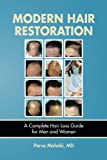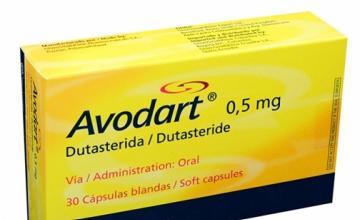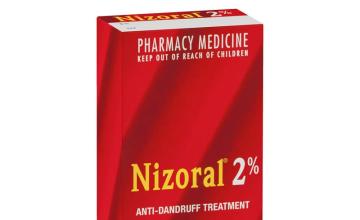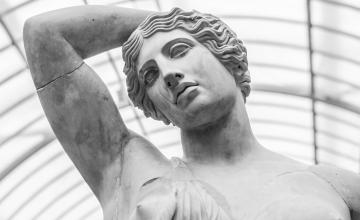Patrick Mwamba, MD



Finding excellent in-depth information about hair restoration, beyond infomercials and brochures, can be difficult. We recommend the below books for those interested in-depth and reliable hair restoration information.

Hair Restoration has made great progress over the last several years with new techniques that have helped improve the quality and efficiency of hair transplants. Dr. Parsa Mohebi, one of the premier hair restoration surgeons, describes these groundbreaking methods, which include new, surgical techniques, hair loss medications, and non-invasive treatments in his book.
Hair loss can have a devastating effect on our self-image and can impact our personal and professional lives in innumerable ways. Dr. Mohebi assures those who are suffering with this condition that there are many medical and surgical treatments available today to help treat patients with different types of hair loss, including specific treatments for male and female patterned baldness. Dr. Mohebi gives his readers tips that can help them evaluate their current hair loss situation in order to find the best treatment available.
Modern Hair Restoration is a one of a kind A-Z guide for most types of hair loss sufferers. It is based on the latest advancements in treating male and female patterned baldness and the newest techniques of hair restoration. The medical breakthroughs described in this book have successfully treated thousands of patients and should continue to help the lives of many more hair loss sufferers for years to come.
Buy MODERN HAIR RESTORATION - A Complete Hair Loss Guide For Men And Women
"The Hair Replacement Revolution" offers hair loss suffers atruly expert and comprehensive guide to all legitimate hair loss treatments.
This guidebook is written by two credible and respected physicians, Dr.Emmanuel Marrit and Dr. JamesHarris. It alsooffers suggestions for excellent hair restoration surgeons, which are NOTdetermined by financial contributions. This book can be purchased at Amazonfor $12.00 and is truly a "Must Read"!
Read exerpts from this great book.
Hair Restoration is in demand worldwide, but because Asian hair tends to be more sparse and coarse than Caucasian hair, transplantation procedures need to be adapted to Asian patients. This book, exclusively devoted to Asian hair, is a complete and comprehensive text written by a group of authors sharing their experience in their specialized fields of hair restoration. Included are many practical tips as well as chapters on regional transplantation such as eyebrows, eyelashes, sideburns, beards, and mustaches, in addition to the usual scalp hair restoration.
With its many illustrations, the book gives readers a complete knowledge of hair restoration surgery and provides a quick, easy-to-use reference on Asian hair and the differences in patients' demands. With an influx of new physicians in this challenging field of medicine, further education and training are imperative and must be available to provide a high standard of medical practice. This compilation meets that objective and ultimately makes the valuable contribution of restoring patients' self-confidence.
Buy Hair Restoration Surgery in Asians
Although it is usually an unwanted sign of ageing, hair loss may no longer be inevitable. Hopefully, by the time you finish this book you will understand the proven, effective treatment options that have become so popular. In subsequent chapters you will realize that hair loss is a problem that can be solved with new and exciting methods that will be explained in detail as we move along. We live in a new era of medical innovation and possibilities. Advances in medical research, technology and surgical techniques have restored patient's faith in the field of medical and surgical hair restoration. This books explains the entire process of hair restoration today.
Buy To Bald or Not to Baldon Amazon.
What are the causes of hair loss? Can you prevent it? Can lost hair be restored? Hair Loss & Replacement For Dummies helps you understand why men and women lose their hair and offers thorough, objective reviews of a wide array of hair replacement options, including hair replacement surgery, prescription and over-the-counter medicinal treatments, hairpieces, natural remedies, and a variety of other options.
This authoritative, user-friendly guide explains the pros and cons of hairpieces, fibers, foundations, and hair thickening techniques. You’ll learn about pharmaceutical, laser, and topical treatments, and you’ll find out how to determine whether you’re good candidate for hair restoration surgery. You’ll even find help in assessing costs, controlling expectations, avoiding hair replacement scams, and determining which option truly is best for you. You’ll discover:
Complete with helpful myth-busting information about the causes of hair loss and the benefits of FDA-approved treatments, and helpful comparisons of the advantages of non-surgical and surgical hair replacement, Hair Loss & Replacement For Dummies is the resource to consult before you decide on any hair replacement treatment.
Buy Hair Loss and Replacement For Dummies on Amazon



If you are going bald you should seriously consider hair loss medication treatments to halt or even reverse your hair loss. While there is no “Hair Loss Cure”, hair loss drugs like finasteride (Propecia) and dutasteride (Avodart) can often stop or even reverse alopecia areata in most people.
However, just like any other drug, Propecia is accompanied by a list of potential side effects, some of which have been more recently reported as potentially long term. You can read more about this in the "What About Side Effects" section further down this page.
Studies have shown that 80% of men using Propecia stopped or even reversed their hair loss to some degree. Preliminary clinical trials for Avodart appear even more effective than Propecia.
However, neither Propecia nor Avodart has been proven to restore hair in the frontal areas. For reasons yet unknown these drugs, along with Rogaine, only generally work in regrowing thinning hair in crown area of the scalp. Only hair transplant surgery has been successful in restoring hair in the frontal hairline area once it has been lost.
Propecia and Avodart are also less effective in growing hair in older men. These hair loss drugs work best for men who have been balding for less than five years.
Both Propecia and Avodart are not recommended for use by women or children.
It’s been found that these drugs can cause birth defects. More specifically, these birth defects may occur when large amounts of the drug are absorbed into the body during the period of foetal development.
Physicians advise pregnant women to not handle Propecia tablets, as this may harm male foetuses. But as of yet, there has not been a single reported case of birth defects caused by handling these tablets.
Furthermore, there’s also no evidence that pregnant women exposed to the semen of Propecia or Avodart patients will risk any birth defects.
Propecia and Avodart are also not advisable for men with liver disease or prostate cancer.
Often our member physicians will prescribe Propecia or Avodart to halt a patient’s hair loss and then restore the hair already lost with hair transplant surgery. These treatments in combination can work synergistically. The drugs work to halt the hair loss, while hair restoration surgery restores what was lost.
To get a prescription for Propecia or Avodart schedule a free no obligation consultation with any of our quality hair restoration physicians. Find a physician in your area.
Propecia and Avodart should be taken once a day. It has been found that after two years of treatment, Propecia effectively grows hair in about 66% of patients. Also, about 83% of the subjects receiving this treatment continue to maintain their existing hair after two years.
Propecia (Finasteride) was originally a drug called Proscar, which was used to treat and reduce men's prostate conditions such as benign prostatic hyperplasia (BPH).
Its parent company, Merck & Co., soon realized that the drug had a unique side effect - it grew hair on bald men's heads.
In December 22, 1997 the FDA approved Propecia as a hair loss pill. Merck & Co. then marketed the drug as a hair loss treatment under the trade name of Propecia.
More recently Dutasteride, sold as Avodart, has generated interest as a promising new hair loss medication. Like finasteride (Propecia) it inhibits the creation of DHT and was originally developed as a treatment for men’s prostate condition.
However, unlike Propecia, Avodart inhibits the creation of both type one and type two 5 alpha reductase enzymes. Dutasteride has been shown to decrease levels of DHT by 90% after only two weeks, making it a more powerful and faster acting weapon against hair loss than Propecia (Finasteride).
Dutasteride is not yet FDA approved for the treatment of hair loss. However, some hair restoration physicians also prescribe it for the treatment of hair loss. Like Propecia, Avodart is not safe for women and children.
Losing your hair took time. So too will regrowing your hair using Propecia or Avodart. These drugs require patients to take the drug daily for at least three months before any obvious changes will be noticeable. Most physicians advise taking these drugs for a year before evaluating their effectiveness.
At this time, Propecia and Avodart are only available by prescription. Our member physicians are available to discuss these hair loss drugs with you and prescribe them if appropriate. To find a quality hair restoration physician in your area.
Aside from Propecia and Dutasteride, there are other treatment options (all topical) that may or may not work to block the effects of DHT on vulnerable hair follicles. These include Revivogen, Crinagen, Progesterone Creams, and Xandrox (a type of minoxidil). Other DHT Blockers
To learn more about these treatments, as well as all other topical options, visit our Topical Hair Loss Products and Treatments section.
Baldness is largely the result of dihydrotestosterone (DHT) interacting with those hair follicles that are genetically vulnerable to their effects.
DHT is essentially the active ingredient or catalyst for the hair loss process. DHT binds with the receptor sites of genetically vulnerable follicles and gradually degrades the follicles ability to produce healthy hair. This eventually results in baldness in the affected areas.
Hair loss drugs like Propecia or Avodart work by inhibiting the conversion of testosterone into dihydrotestosterone (DHT). By reducing the amount of DHT present in the scalp the hair loss process is slowed and in some cases even reversed.
Up until a couple of years ago, side effects when taking Propecia or Avodart were only considered temporary. However, over the last several years, many me have reported ongoing side effects from Propecia even after stopping treatment. This more permanent condition has become known as "Post Finasteride Syndrome" or (PFS). Side effects included but aren't limited to reduced semen production, a reduced libido and softer erections.
As a result, in April of 2012, the FDA mandated labeling changes to finasteride related products. Labeling changes to Propecia include "libido disorders, ejaculation disorders, and orgasm disorders that continued after discontinuation of the drug". Labeling changes to Proscar include "decreased libido that continued after discontinuation of the drug". Labeling changes to both Propecia and Proscar include "reports of male infertility and/or poor semen quality that normalized or improved after drug discontinuation".
While most men don't experience any side effects at all, it should be known that a small percentage of men may experience persistent side effects even after stopping treatment. Most men who experience side effects however, only experience them temporarily and stopping treatment makes them go away.
For a list of potential side effects and more information on Post Finasteride Syndrome", visit http://www.pfsfoundation.org/.

Nizoral 2% is magnificent shampoo and a significant part of what's referred to commonly as the Big 3. The other two are the FDA approved and proven treatments Propecia (finasteride)and Rogaine (minoxidil). To date, Nizoral is the only shampoo on the market that can make the unique claim that it's proven to stop the formation of DHT. Its active ingredient ketoconazoleat 2% concentration has proven to be a moderate DHT inhibitor and has growth stimulating properties about as effective as Rogaine 2%.
This product includes 2%, the highest concentration of the active ingredient ketoconazole. To view the clinical abstract proving the effectiveness of ketoconazole in the treatment of androgenetic alopecia, view "Ketoconazole as a hair loss treatment". There is also a less concentrated 1% of Nizoral. To learn more, visit Nizoral regular shampoo.
We strongly suggest using Nizoral shampoo in addition to other proven treatments. Nizoral should be used 2 or 3 times a week to avoid dry hair and a flakey scalp.
On the off days, you may want to consider rotating Nizoral with other excellent shampoos designed specifically for thinning hair. See the recommended treatments section below for other shampoos we recommend.
Men and women sometimes suffer from hair loss for different reasons. Thus, diagnosing its cause is necessary to facilitate and promote proper treatment.
Don't expect immediate results. It's recommended to use Nizoral in conjunction with other proven treatments for at least 6 to 12 months before determining its effectiveness. Documenting your progress with bi-monthly photos can help you determine whether or not Nizoral has been successful in helping you maintain existing hair.
To date, only surgical hair restoration is proven to grow hair in completely bald areas. You are invited to have a free virtual consultation with one of our prescreened hair restoration physicians.


It was Hippocrates, the “Father of Modern Medicine”, who first recognized a connection between hair loss and the sexual organs. Hippocrates’ studies of eunuchs (men castrated before puberty) observed that these men did not suffer from hair loss.
We know today that this is due to the absence of testosterone, which is normally converted into dyhydrotestosterone or DHT – the active ingredient in baldness. In March 1995, Duke University researchers came to the conclusion that " . . . while castration may be a cure, it is not commercially acceptable."
Hippocrates had a personal interest in finding a cure for baldness as he suffered from hair loss. He developed a number of different treatments including a mixture of horseradish, cumin, pigeon droppings, and nettles to the scalp. This and other treatments failed to work and he lost the rest of his hair. The area of permanent hair on the back and sides of the head (from which donor hair is taken for hair transplants) is also known as the “Hippocratic wreath.”
Moving from Greece to the Roman Empire, we find that Julius Caesar employed a variety of methods to hide his thinning hair. In addition to the laurel wreath that he wore, he first grew his hair long in the back, and then combed it forward over his bald spot. Yes, the “Comb Over” is ancient.
Learn how man has treated hair loss up to modern times.
Being a Eunuch – the sure way to stop baldness
In the 1940’s, the studies of Hippocrates and Aristotle were continued. Both men had concluded that eunuchs always kept all their hair.
This finding was backed up by the work of Dr. James Hamilton.
He discovered that certain male hormones (missing in eunuchs) were critical to the development of male pattern baldness.

Procerin is one of the top selling “all natural” hair loss products on the market today and is often an attractive alternative to drugs like Propecia (finasteride)and Rogaine (minoxidil). Procerin comes in both a tablet and topical form that can be ordered together or separately depending on your hair restoration goals.
Men and women suffering from androgenic alopecia (genetic female hair loss / male pattern baldness) have elevated levels of the hormone DHT (dihydrotestosterone) in their body. Procerin’s claim to fame is that it naturally blocks this DHT without reacting with testosterone like the drugs Propeciaand Avodart (dutasteride). This allegedly allows Procerin to stop hair loss and stimulate hair regrowth without unwanted sexual side effects. Procerin is so convinced their product works, that they offer a 90 day money back guarantee if you don’t receive your desired hair growth results. But how many balding men and women have successfully restored their hair with Procerin?
In order to fully evaluate the efficacy of this product, we must further explore each ingredient to determine whether or not this hair loss treatment delivers what it promises. Below you will find a list of ingredients and information that will help you determine whether or not Procerin is right for you.
The Procerin tablet includes a number of alleged “all natural” DHT blockers including saw palmetto for hair loss, zinc sulfate, pyroxidine, magnesium, and a proprietary blend of gotu kola, nettles, pumpkin seed, eleuthero root, muira puma root, and uva ursi. Many, but not all of these ingredients are also found in the highly popular hair loss treatment Provillus.
Oral saw palmettoand nettle root extracthave been used as “all natural” alternatives to treat benign prostatic hypertrophy (BPH) or enlarged prostates. Theories have thus been produced that they might also effectively treat baldness and alopecia.
Some studies suggest that Zinc when combined with Vitamin B6 may be able to inhibit the conversion of testosterone to DHT in the skin.
Pumpkin seed oils contain the ingredient delta-7-sterine that has been said to protect the prostate by competing with DHT. Therefore, it’s suggested that this ingredient might help reduce the risk of genetic hair loss.
Eleuthero, uva-ursi, muria puma, and horsetail are said to promote healthy hair growth, hair expansion, and a clean scalp. However, promoting healthy hair growth is not the same as stimulating new hair growth, hair regrowth, nor does it indicate they’re effective hair loss treatments.
The Procerin topical solution contains saw palmetto extract, gamma linolenic acid, grape seed extract, azelaic acid, avocado oil, and nettle extract.
Azelaic acid when applied topically has been conjectured to inhibit DHT. Some anecdotal evidence suggests oral saw palmettomay inhibit DHT however; no such evidence exists for topical use. Though nettles are typically consumed orally, some speculate nettle root extract may help fight alopecia areata when applied topically.
One false assumption is that “all natural” hair loss products don’t have potential side effects. Procerin reports directly on their website that reported side effects include mild stomach discomfort and from the topical formula, skin irritation. Additionally, be sure to research each ingredient carefully as some side effects are possible in larger quantities.
Currently there are no standards on dosages of herbal medications in the United States. In addition, no formal clinical studies have been performed on them for treating baldness. Therefore, the suggested daily value listed on the ingredient package is based on something other than government regulation and scientific study.
The discounted cost of the combined formula for a 1 month supply of Procerin is about $50 and is discounted when you buy in bulk. It is also cheaper when you buy in bulk.
Though we can appreciate the aspiration for balding men and women to use herbal products as an “all-natural” replacement for Propecia to treat androgenic alopecia, we’ve seen no third party clinical studies that support the ingredients in Procerin can successfully stop hair loss or stimulate hair regrowth. Due to the lack of compelling evidence in these other conjectured hair loss solutions, it may be more beneficial and cost effective to spend your money on Propecia (finasteride) for men only and Rogaine (minoxidil) that has helped balding men and women worldwide for years. For men who have experienced sexual side effects with Propecia, Procerin may at the very least, be worth trying as an adjunct treatment to Rogaine.
 Para-Aminobenzoic Acid (PABA) has been called the anti-gray hair vitamin and is considered one of the lesser known members of the vitamin B complex family (despite the fact that it’s not really a vitamin at all). PABA is a non-protein amino acid and isn’t essential in the human body. It can be found in foods such as liver, whole grain, yeast, and kidney and is listed as an active ingredient in several popular herbal hair loss treatments such as Provillusfor women and Procerin.
Para-Aminobenzoic Acid (PABA) has been called the anti-gray hair vitamin and is considered one of the lesser known members of the vitamin B complex family (despite the fact that it’s not really a vitamin at all). PABA is a non-protein amino acid and isn’t essential in the human body. It can be found in foods such as liver, whole grain, yeast, and kidney and is listed as an active ingredient in several popular herbal hair loss treatments such as Provillusfor women and Procerin.
The potassium salt in PABA called POTABA is available on prescription. POTABA is indicated for Peyronie’s Disease and scleroderma. The dose for Peyronie’s disease and scleroderma is very high (12 grams daily in 4 to 5 distributions) and must only be used under medical supervision. Because of the high doses needed to achieve clinical efficacy, patient compliance is typically poor.
But can PABA actually treat male pattern baldnessor genetic female hair loss?
Some tests conclude that PABA when combined with other elements such as folate, biotin, and pantothenic acid, may restore pre-maturely graying hair to its natural color. Some anecdotal reports suggest it might also stop hair loss, however; there are at least as many reports that contradict this. Moreover, we haven’t seen any evidence to suggest it can stimulate new hair growth or hair regrowth.
PABA comes in doses of 100mg, 250mg, and 500mg as a standalone product. However, since no formal clinical studies have been performed on PABA for hair loss, a suitable dosage is mostly speculation. Additionally, since no regulations have been placed on herbal medication, one should proceed with extreme caution before taking any herbal supplement. Consulting with a doctor is advised.
Some manufacturers of herbal replacements to medication would have you believe that herbal treatments come without potential side effects. However, this is a farce.
The following side effects have been reported from consumers of PABA: Anorexia, vomiting, nausea, hypersensitivity, fever and rash (particularly with larger doses). These symptoms went away when PABA is stopped.
Ironically, Provillusonly includes PABA in the woman’s formula. However, women should know that pregnant women, nursing mothers, and children should avoid using PABA.
For those with renal disease, PABA should be used with caution. PABA should be stopped if hypersensitivity develops. Those taking pharmaceutical doses of PABA must be under medical supervision.
